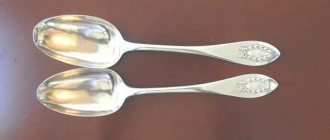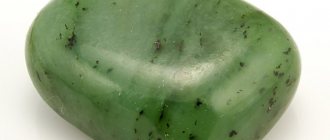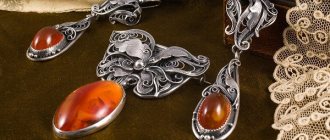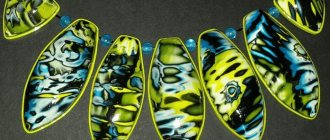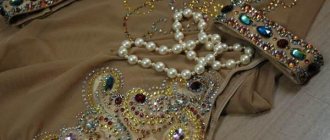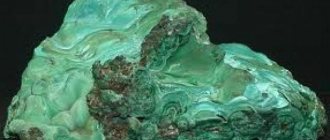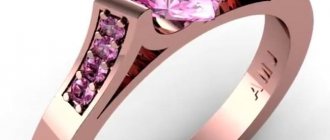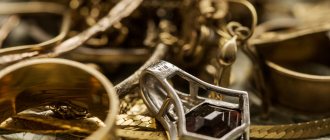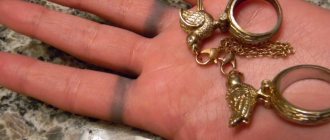The “gold rush” in a modern way is not a search for a promising vein in the vastness of Siberia, followed by exhausting digging, washing out grains of the coveted metal.
To become the owner of precious metals today, you need to buy household radio and electrical appliances from the population that have lost practical interest, and, armed with a “young chemist’s” kit, engage in refining - the purification of secondary precious metals (SPM).
If you have information about which household devices and office equipment contain the largest amount of gold, silver, platinum, platinum group metals (palladium, iridium, etc.), refining becomes not just an entertaining chemical experience , but a cost-effective production.
The realities of the modern economy dictate that manufacturers use minimal precious metals in the manufacture of various gadgets, which cannot be said about the era of active construction of communism.
Therefore, household appliances produced in the Union, or more precisely, elements of devices, contained a large amount of precious metals. It is this equipment that is the target of buyers.
Why are gold and other precious metals used in equipment?
Gold, platinum, silver, as well as other valuable metals (copper, brass, etc.) are unsurpassed conductors, which ensures the uninterrupted functioning of high-tech computer and other devices.
In addition to this technical parameter, precious metals do not oxidize .
This characteristic, in turn, directly affects a significant increase in the service life of the same high-tech devices, which include various equipment:
- TVs;
- refrigerators;
- washing machines, etc.;
- office equipment (printers, faxes, etc.).
MICROCIRCUIT IN CERAMIC CASE
- KM155TM7
- KM 555TM2
- AOD109A; ZOD109A
- (K)1NT251,661;2TS622B
- 1LB337; 1DR331; 1TK331
- 564 LA7, LE5, TM2, LN2
- 132 RU1
- 564 PU 4
- 564RU2(KP1)
- 537 RU2
- 169UL1
- 142 EH2B; KND1(5)
- K565RU2;K507RU1
- K565RU1
- 556 RT 5A
- 556 RT 7A
- Series 286
- 133IR13
- (K)505RES
- K573 RF5(2)
- KS 573 RF2
- KM 804
- K1ZhG 451
- K5ID011
- 543 KNZ
- 2TAK291B
- K2IE301 B; 2IE302B
USSR TVs
This gadget was previously released in two versions : a tube device and a transistor device.
It makes no sense to buy tube TVs, since precious metals are contained in these devices only in the beam tetrode - the largest lamp marked 6P36S, 6P44S, 6P45S, GU50.
Another thing is transistor TVs. There is an abundance of precious metals here.
Buyers are interested in the following elements :
- microcircuits encased in plastic housings;
- transistors marked KT814, KT940, KT310, KT502, KT503;
- AL307 LEDs in the channel switching unit;
- “yellow” (according to the color of the case) transistors KT203, located in the SMRK unit and in some variants (models) on other boards;
- capacitors KM-1;
- “yellow”, sometimes “red” capacitors K10-17, etc.
Any product is subject to careful inspection, since products of this type, produced in the Union, were distinguished by a variety of models .
In addition, one device could have different configurations, both containing precious metals and not using them.
We bring to your attention a table that shows which USSR TVs contain valuable elements and how many there are. The mass of precious metals in one product is given in grams.
| Model | Au (gold) | Ag (silver) | Pt (platinum) | Pd (palladium) |
| Knight | 0,3412 | 7,4606 | 0,622 | 0,3199 |
| Horizon-Ts355 (Ts355D) | 0,6785 | 3,7443 | 0,43 | 0,318 |
| Rainbow-719-1 | 0,3135 | 7,1795 | 0,6294 | 0,0339 |
| Rubin Ts202 (Ts208) | 0,4443 | 3,6787 | 0 | 0 |
| Electron-736 | 0,24 | 6,33 | 0,225 | 0,0338 |
If we compare the content of precious metals in Soviet TVs “Horizon”, “Vityaz”, etc. with imported ones, it is worth noting that a device manufactured in Japanese and Chinese, Taiwanese or Korean assembly contains only 0.1474 g of gold and 2.4859 g of silver.
Content:
- Why is there gold in electronic components and radio components?
- Which radio components contain the most gold?
- Soviet radio components containing gold
- Relays containing gold
- Transistors containing gold
- Microcircuits containing gold
- Foreign radio components containing gold
Now radio components are called electronic components, and the outdated name follows them from Soviet times, when there were still radio tape recorders, radios, and so on. Nowadays it is more correct to call electronic components.
Computers
Soviet-style electronic computers contain in their design many capacitors marked KM, K10-17, as well as “yellow” microcircuits in plastic or ceramic shells . These are elements containing precious metals.
There are also gold-plated connectors, contact pads and other elements suitable for refining.
In computers from abroad, the processor is valued. There is a particularly high gold content in processors housed in a lilac ceramic case .
We suggest that you familiarize yourself with the table with the content of precious metals in some computers and their processors. The mass is also given in grams per device.
| Model name | Au | Ag | Pt | Pd |
| Elbrus-1-KB | 2668 | 7737,4 | 259 | 639 |
| Electronics-60 | 17,93353 | 29,85809 | 6,46067 | 5,86536 |
| ШК-1700.02601 | 1384,33 | 1679,95 | 83,01 | 15,88 |
| SM1307.604 | 113,9996 | 96,5643 | 0,0974 | 2,0039 |
| Personal computer | 10,972 | 5,84 | 0,082 | 0,267 |
| EC-1842.03 | 12,886 | 13,839 | 0,481 | 1,387 |
| DVK-2M | 13,185 | 26,0418 | 5,0743 | 2,8305 |
Foreign-made computers manufactured before 1990 contain elements similar to domestic parts marked K10-17. These capacitors are accepted at the same price at which domestic parts are purchased.
Radio components containing gold
Gold-bearing deposits are developed if the content of the precious element is at least 1 gram per ton of rock. In one chip there is from 1 to 5 percent yellow metal. The leads of the part, enclosed in a ceramic case, are coated with gold.
If it is made of plastic, the content of valuable raw materials is less - from 0.2 to 1 percent. In transistors, the precious element is about 2 percent. The substrate located under the conductor is made of gold.
But capacitors break all records. Their size is approximately equal to a three-liter jar. One such part contains approximately 8 grams of yellow metal. In addition, there is also 50 grams of silver. However, only capacitors used in military equipment - generators and radio signal transmission stations - are equipped with expensive filling.
Some gold can also be extracted from radio tubes. The precious element is deposited on a grid located near the cathode. The latter, when the lamp is operating, heats the grid. When exposed to heat, it begins to release electrons. This disrupts the operation of the product.
Therefore, the radio component needs to be coated with gold . Spraying from it is also found on the legs of objects of consecration, but this only applies to old samples, decades old.
Several microns of precious raw materials were previously applied to connectors of all types of semiconductors, such as diodes, optocouplers, thyristors, and zener diodes. Gold is rarely found in resistors. However, some of them, along with silver, also contain a little yellow metal.
These are the standards by which radio components were manufactured in the USSR in the 70s and 80s of the last century. Gold is also found in modern radio components . However, it is impractical to extract hundredths of a gram from an item for which tens, or even hundreds of thousands of rubles were paid. Let the old parts be used - that's another matter.
Most often, radio components containing gold are found in old-style computers, switching devices, and radio equipment. Electronic computing units of the SM and CE series should be of primary interest to applicants. One such machine contains from 0.2 to 10 kilograms of gold. Some military equipment can boast of the same thing.
Beginners will find it useful to list not only the general names of radio components equipped with gold “filling,” but also specific model designations. So:
Transistors KT201, KT203, KT3102, KT301, KT306, KT605. All of them are equipped with golden colored legs.
KT802, 808, 803, 809, 812, 908. We need samples produced before 1986. In later models gold was not used.
KT907,904, 606. Externally they have no gold elements and no yellow color. However, valuable raw materials are actually present.
But KT602, 604, 611, 814, 815, 816, 9909 have gold cases.
Relay RES9, 10, 15, 22, 34, RPS24, 32, 34, RKG15.
Microcircuits K142EH, K50, K56PY2, AOT101, K145, also known as the “white spider”.
Chips K133, 134, 178, 249, 564, 565, K140, 157, 217.
Diodes of the D226 series and similar ones.
Capacitors Km3, 4, 5, 6, 10, 11, 12, 13, 14, 15, 16, 17, 52-1, 52-7, K53-1, 53-6, 53-7, 53-10, 53 -15, 53-16.
Resistors PTP1, 2, PLP2, 6, PP3-40, 3-41, 3-43, 3-44, 3-45, 3-47, KSP1, 4, KSU1, KSD1, KPU1, KPP1, SP5-1, 5 -2, 5-3, 5-4, 5-14,5-15, 5-16, 5-17, SP3-19, 3-44.
Connectors SNP59-64V, SNP59-96R, GRPPM7-90Sh, RPPG2-48.
Switches TV1, P23G, Pg2-5, 2-6, 2-7, 2-10, P1T3-1V, PR2-10, PKN8, PT33-26, PP8-6, PPK2.
Cell Phones
The old cell phone that many of us have lying around unused at home contains:
- Au – 0.024 g;
- Ag – 0.25 g;
- Pd – 0.009 g;
- Ta (tantalum) – 0.4 g.
And this is not counting non-ferrous metals (copper, tin, etc.). Precious metals are found in circuit boards and in all live contacts of cell phones.
From 40 cell phones that have lost practical interest, the same amount of gold is mined as is mined from 1 ton of gold ore.
MICROCIRCUIT IN PLASTIC CASE
- Series K 131
- Series K 155
- Series K 155, 155 (poor)
- Series K 155 (with duralumin backing)
- Series K 155 (large)
- Series K 158
- Series K 500; 500
- Series K 500 (poor)
- Series K 531
- Series K 531 (with duralumin backing)
- Series K 555; (IR 22.23) (with duralumin backing)
- Series K 555
- Series K 555 TM 8(9)
- Series K 556 (large with duralumin backing)
- Series K 561
- Series KR 565
Printers
This type of office equipment, from a profitability point of view, is the most unprofitable investment .
Of course, this equipment also contains precious metals.
In particular, gold-plated contacts of the print head and cartridges.
Copiers - photosensitive elements - are coated with noble metal.
However, the amount of precious metals in printers is so negligible that “the game is not worth the candle.” For example, foreign equipment in this category contains 0.01 g of gold and 0.8 g of silver. A domestically produced product, model CM6329 02M, boasts only 0.01 g of “yellow” metal.
Costs of separating gold from radio components
One liter of reagents costs approximately 300 rubles. 1 gram of isolated gold is valued at approximately 2500-3000 rubles. To get about 3 grams of yellow metal from KT605 transistors, for example, you will need 100 parts. Each of them contains 27 micrograms of valuable raw materials.
You can buy transistors for 15-20 rubles apiece. Spend about 2000 rubles, you will receive approximately 8000-9000 thousand. It is necessary to calculate the profitability of an enterprise. “Recycling” of some radio components is unprofitable.
Refrigerators
It doesn’t matter whether the household unit was manufactured in the Union or has been released from the assembly line at the present time, all refrigerators, or rather thermostats, have silver contacts, as well as soldering with PSR solder.
Consider the most popular brands :
- Nord-155 contains 0.0012 g Au and 6.21 g Ag;
- The Smolensk brand refrigerator can boast the same amount of precious metals;
- Mir-101-1 – 3.177 g Ag;
- Minsk-126 – 2.38 g Ag;
- Zyl - 1.326 g of the same metal;
- Don – 1.8 g Ag.
In general, it is also quite meager . Whether it’s televisions or high-precision equipment, not to mention equipment intended for the military-industrial complex of the USSR.
MICROCIRCUIT IN A METAL CASE
- Series 122 UN(UD)
- (K) 140UD1A(3),UD1A
- 140 UD 6A;UD 6A
- 140UD7.UD7
- 521 CA2,3
- 723 V
- TESLA MAA 723
- TESLA MAA 723 (without gold plated)
- 2 N 290 4A
- 217 NTZ
- 217LB2A; 217KTZ (with gold-plated cover)
- K814KN 1 B
- KTS 613 (A,B) 2TS 613 (A,B) with gold plated base
- 2TS (KTS) 613 A, B
- 1TS609B
- K284 UD; 284UE1
- 263 UI1
- 228 UV 2, 4; K228 UV 4 (with gold-plated base)
- 228(K) UV 2; 4
- K816UD1A, 2A(V,G)
- K298FN8, 10, 16
- K 223 TK 1
- K817EN 1A(2A)
- KMP 817 EN 4B (ZB)
- KMP817UD6
Tape recorders and radios
These units, produced in the Union, also had elements containing precious metals in their designs.
The most valuable items
in tape recorders :
- “black” microcircuits in a plastic shell (174un7 and other parts);
- powerful transistors marked KT802 and similar elements - KT814, KT503, KT203, KT3102;
- “yellow” chips located in the indicator controller.
Such elements are found in the legendary Mayak tape recorder of the 80s, as well as in devices similar to it .
In tape recorders, precious metals can also be contained in capacitors, relays, switches, and other elements; noble metals in radiols are contained in capacitors.
In addition, silver contacts of range switches are often found. Let us consider in the table the content of valuable elements in some tape recorders.
| Model | Au | Ag | Pt | Pd |
| Electronics-004K | 1,04 | 6,319 | 0,0705 | 0,1067 |
| Sonata | 0,3129 | 0,6072 | 0,001 | 0,0035 |
| Mayak-233 stereo | 0,1853 | 0,96935 | 0 | 0 |
| Legend-404 | 0,688 | 0,0632 | 0,001 | 0,0042 |
| Belarus-302 | 0,0308 | 0,2174 | 0,001 | 0,1493 |
RELAY
- RES 6
- RES 9
- RES 10
- RES 15
- RES 22
- RES 32
- RES 34
- RES 44
- RES 47
- RES 48
- RES 49
- RES 54
- RES 55; RES 64
- RES 59
- RES 60
- RES 78
- RES 80
- RPS11/5
- RPS18/7
- RPS32B
- RPS34A
- RPS42B
- RPV 2/7
- RP4, RP5, RP7
- RGK15
- REC 23
- PPI
- RKM 1
- R154POT
- DP12
- REN 33
Refining of precious metals
There are several ways to remove VDM from recycled equipment .
For home use, the electrolysis method is primarily suitable.
To do this you will need:
- capacity;
- hydrochloric or sulfuric acid as an electrolyte;
- a cathode made of lead or steel;
- an anode made of gold, in the case of refining of this particular precious metal;
- power supply providing alternating current.
In addition to electrolysis, precious metals can be “etched” chemically - using a mixture called “aqua regia”. This composition is a mixture of hydrochloric and nitric acids in a ratio of 3:1.
Refining of various items and parts is carried out in a way that will allow you to obtain the necessary elements with minimal losses.
Do-it-yourself gold extraction
Those interested in recycling can begin work in this direction by collecting gold-containing raw materials. Studying the indicators of radio components, methods of their primary processing and sorting will create a good basis for further work .
The presence of conditions in the home will allow amateurs to engage in practical gold extraction. It is important to know:
- About the dangers of working with toxic and caustic substances, about safety precautions.
- On the technology of laboratory work in chemistry.
- About legal methods of collecting raw materials and marketing the resulting metal.
The basic condition for working in the field of precious metals recycling is compliance with the law .
The only easiest and safest way to work in the field of precious metals recycling is to cooperate with a registered company that knows and complies with the requirements of the laws.
Independent work can be carried out on assignments from a company where the consumer can return a valuable device for recycling.
You can read more about practical work in the field of self-extraction of gold from radio components here.
Experience, understanding of processes, the ability to rationally approach chemical operations, as well as information about which parts contain gold will allow you to obtain sufficiently pure metal above 950 purity.
Where to look for radio components with precious metals - start with collectors
Many useful articles on the Internet indicate various sources where you can find some Soviet electronics. But for some reason, rarely does anyone point out the large number of collectors in our country who collect various old dilapidated Soviet equipment.
It is from them that you can get extremely valuable military electronics, which contain a huge number of valuable rare earth metals, some samples of which are now more expensive than gold.
Collectors not only have their favorite “toys” that lie around the house and delight them with their appearance, but also their storage rooms often contain special-purpose Soviet-era electronics that are literally replete with riches.
◄ Back to news
Connectors, pins, lamellas
Since the main purpose of gold in electronics is to protect contacts from corrosion, it can be found as a coating on the contact pins of plugs and connectors, as well as in the contact strips of lamellas.
Even compared to gold-plated Soviet microcircuits, it is difficult to find contact surfaces that were used in computers and in switching units of automatic telephone exchanges. But if this is successful, then a lot of gold can be extracted - up to several grams from one connector.
These are not all Soviet radio components that contain gold. But the rest are either extremely rare and in single quantities, or have such a small amount of gold that its extraction is unprofitable.
Where is gold used?
Modern science does not stand still, and today you can find Au in the most unexpected industries. Few people know the fact that over the past 10 years, the amount of gold consumed by humanity has tripled.
Precious metal required:
- doctors and pharmacists;
- for car enthusiasts and astronauts;
- and also to all those who cannot imagine life without their favorite gadgets.
In medicine, Au is used as a material for the manufacture of hearing and ocular prostheses. The element is also included in the alloy from which medical instruments are made. Such accessories help reduce the risk of allergic reactions, as well as speed up the recovery process after surgery.
Pharmacists use gold to produce a whole range of medicines and cosmetics for skin, hair and body care. Au is used in the creation of medications that are used in the treatment of cancer tumors.
Car enthusiasts know that the precious metal is certainly present in the car; its use helps ensure safety and increase the speed of the car.
As for astronauts, if you believe the research, this industry spent about 40 kg on its needs over several years. A thin layer of metal is used to cover everything possible to protect contacts and even glass from corrosion. The glass on the astronaut's helmet is covered with a thin layer of Au, which helps protect the helmet from damage and exposure to environmental factors.
It is quite natural that today the largest amount of Au is found in modern gadgets. Smartphones, laptops, tablets and other wonders of modern technology attract those who like to extract Au from parts.
Many industries release new models of equipment so quickly that in just a year or two the equipment becomes completely obsolete. Even printers and scanners are designed for a certain number of operations, after which the equipment simply stops working, since it has a manufacturer’s code that blocks the operation of the equipment. If you crack the code, the scanner or printer will start working, but it’s easier and faster to buy a new one, rather than look for a specialist who will repair the equipment.
As an example, we can cite refrigerators and televisions that were manufactured back in Soviet times - they worked for decades and did not break. But today marketing dictates different conditions to us, and most equipment has a reserve, after which the equipment simply breaks down.
As a result, the amount of electronic waste is growing, and the need for recycling equipment and extracting precious metals is increasing. Not only factory workers, but also chemistry lovers take up the work. For those who have at least once extracted Au from microcircuit parts, it is clear that refining is a labor-intensive but quite interesting process.
